Key takeaways:
- Selective mutism is an anxiety disorder in children characterized by consistent silence in specific social situations, requiring empathy and understanding from parents and caregivers.
- Therapeutic advancements, including play therapy and virtual reality exposure, significantly enhance communication in children with selective mutism, promoting their ability to express themselves.
- Creative expression through art and role-playing fosters confidence and helps children navigate social interactions, highlighting the importance of personalized and inclusive therapeutic approaches.
- Advocacy for selective mutism awareness is essential for educating communities, breaking down stigma, and providing supportive networks for affected families.
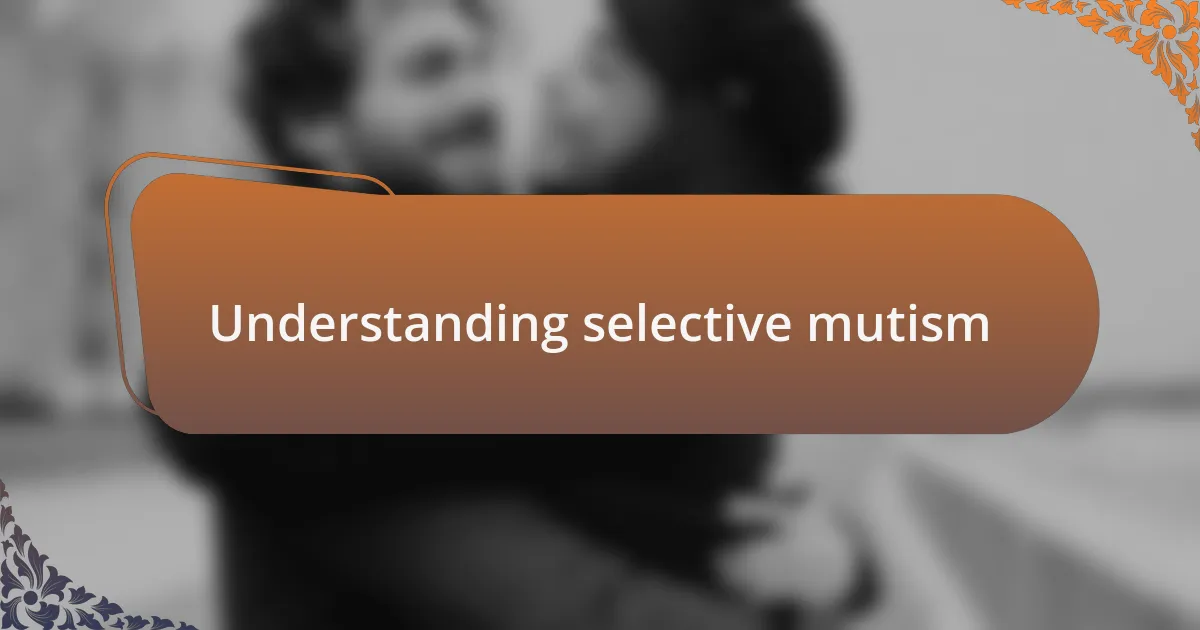
Understanding selective mutism
Selective mutism is a complex anxiety disorder primarily affecting children, where they consistently fail to speak in specific social situations despite speaking in comfortable settings. This condition often stems from overwhelming anxiety, leaving both children and parents feeling isolated and misunderstood. I recall a time when a friend’s child would only speak at home, and it broke my heart to see the subtle frustration in both their faces during family gatherings when silence would dominate the room.
Understanding selective mutism requires empathy and an open mind. It’s not just about choosing not to speak; it’s a deep-seated fear that can make even simple interactions feel monumental. Have you ever felt so anxious that it paralyzed you? Imagine living in that state, day in and day out, where communicating feels like climbing a steep mountain.
Research shows that supportive environments can make a significant difference. I think back to a group therapy session I attended, where individuals shared their experiences with similar struggles. It was a stark reminder that healing can begin with just one person who shows they care, paving the way for those with selective mutism to find their voices in a safe and nurturing space.
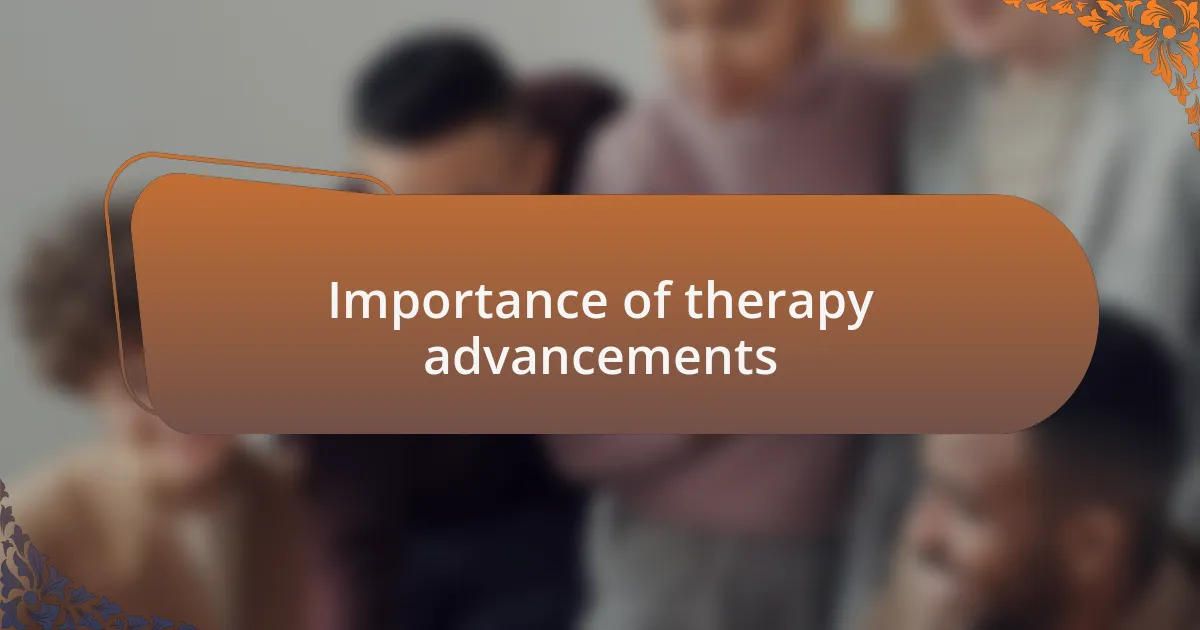
Importance of therapy advancements
Advancements in therapy for selective mutism play a crucial role in addressing the needs of affected children. I’ve observed that new techniques, such as play therapy and cognitive-behavioral approaches, provide tailored strategies that resonate with children on a personal level. It’s like discovering the right key for a lock; suddenly, the door opens, allowing for communication that once felt completely out of reach.
I remember a workshop I attended on recent therapeutic methods, where a specialist shared stories of children who transformed through these innovations. Children who had been silent for years began to express themselves, and seeing their joy was a reminder of the possibilities that modern therapy can offer. What if every child had access to such advancements? The thought of that potential makes me hopeful for a future where communication barriers can truly be dismantled.
The broader implications of these advancements extend beyond the individual; they resonate through families and communities. Witnessing a child find their voice can foster deeper connections, bridging the gap between silence and expression. Have you ever felt the overwhelming sense of relief when someone finally opens up? This is the power of therapeutic progress—it not only changes the lives of those directly affected but also enriches the social fabric around them.
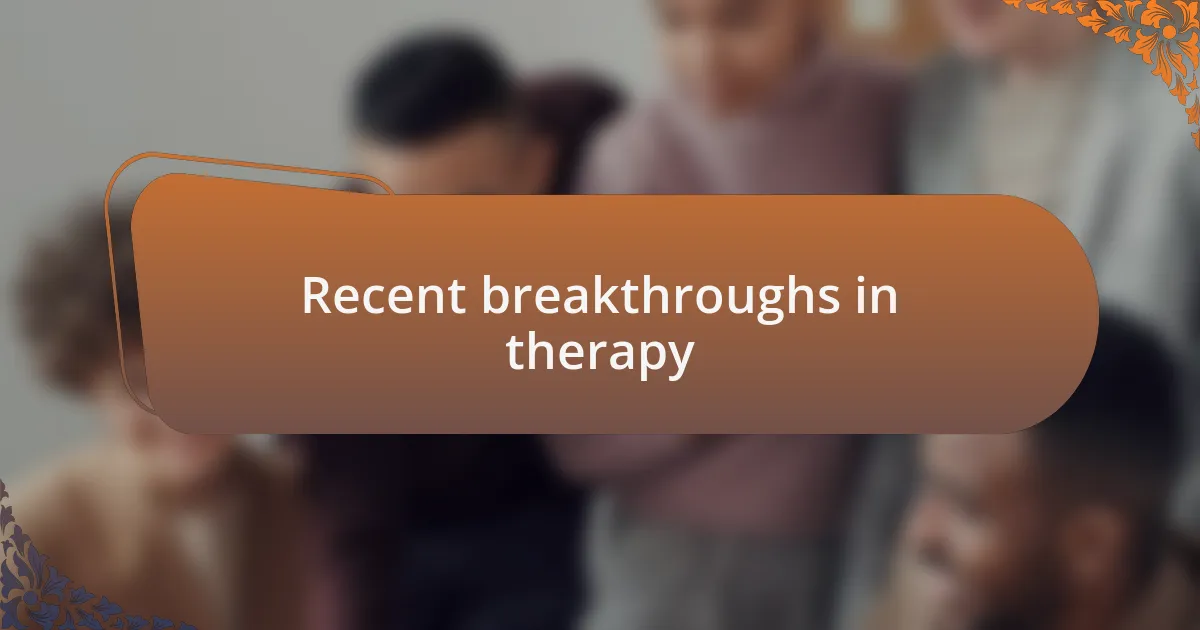
Recent breakthroughs in therapy
Recent breakthroughs in therapy have introduced innovative methods that are revolutionizing the way we approach selective mutism. For instance, the integration of virtual reality exposure therapy has captivated my attention. In a recent discussion with a colleague, I learned how children can immerse themselves in safe environments that simulate real-world social situations. This exposure helps reduce anxiety, and I find it fascinating to see how technology can create empathy and understanding in ways we never thought possible.
Another compelling advance involves the use of social stories and visual supports. I’ve seen firsthand how these tools help children understand social interactions and expectations more clearly. By providing a narrative framework, children can navigate social situations with greater ease. Have you ever watched a child’s face light up when they grasp a concept they previously found daunting? Those moments can be truly transformative, making complex social cues feel less intimidating.
Moreover, the collaborative approach that involves parents and caregivers as active participants in therapy is gaining traction. I remember sitting in a therapy session where both the child and their parent were engaged in role-playing exercises. It struck me how this inclusivity not only enhances the child’s learning experience but also strengthens familial bonds. Isn’t it empowering to realize that we can all be part of the healing process? These breakthroughs remind us that therapy is not a solitary journey, but rather a shared expedition towards communication and connection.

Techniques for addressing selective mutism
One effective technique for addressing selective mutism that I’ve observed is the use of desensitization strategies. I recall a particular case where a child struggled to speak in group settings. By gradually introducing them to these environments, starting with just one trusted friend, I noticed how their confidence blossomed over time. Isn’t it remarkable how small steps can lead to big changes?
Another promising approach is the use of play therapy, which allows children to express themselves in a non-threatening way. I once facilitated a session where we used dolls to recreate scenarios the child found challenging. Watching them engage and communicate through play was incredibly rewarding. Have you ever considered how much insight we can gain from simply letting children express themselves in their own unique ways?
Additionally, incorporating mindfulness techniques can significantly help children manage their anxiety related to speaking. I’ve found deep breathing exercises, when practiced regularly, can make a noticeable difference. I vividly remember a moment when a child, before sharing a thought in a group, took a deep breath and felt calm enough to speak. How powerful is it to equip children with tools to navigate their emotions?
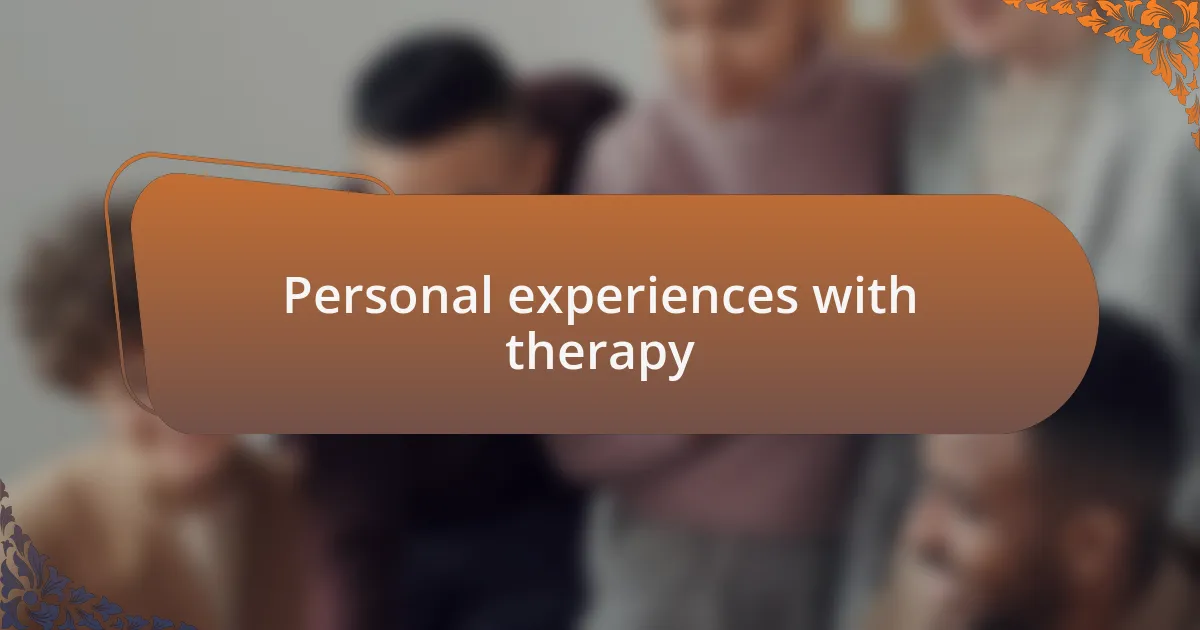
Personal experiences with therapy
Working with children facing selective mutism has been eye-opening for me, especially during therapy sessions. I remember a time when a child I worked with sat silently in the corner, their face a mixture of fear and longing to connect. After several weeks of gentle encouragement and supportive interactions, they surprised me one day by whispering a word to their favorite toy. That moment still resonates with me; it was as if a door had been opened, revealing the potential for their voice.
I also experienced the impact of art therapy firsthand. In one session, a child was hesitant to speak but poured their emotions onto paper with vibrant colors and expressive drawings. As they showed their artwork to the group, I could see their apprehension fade into pride. This transformation made me wonder: how often do we underestimate the power of creative expression in healing?
On another occasion, I facilitated a group where children were encouraged to share stories while using puppets. I was struck by how much more comfortable they felt when their puppets spoke for them. It made me think about how sometimes, we all need a little help finding our voice. Personalizing therapy approaches has proven invaluable, not just for the children, but for me as a facilitator, reinforcing the idea that connection and understanding often come from unconventional methods.

Implementing learned strategies
Implementing the strategies I’ve learned in therapy has been an enriching journey. For instance, I introduced a “feelings chart” during sessions, which allowed children to point to emotions they struggled to verbalize. I vividly remember a child, who had been mostly silent, excitedly pointing to “happy” while sharing a story about their pet. It was a breakthrough moment that highlighted how visual aids can bridge the gap between thought and expression.
In another instance, I started incorporating role-playing scenarios into our sessions. One child took on the role of a cashier at a pretend store, and watching them enact this role brought such joy. It struck me how, by stepping into another character’s shoes, they could communicate without the weight of their own anxiety. Isn’t it fascinating how imagination can sometimes unlock a voice that’s been quietly waiting to emerge?
Furthermore, I’ve seen great results from creating a consistent routine during therapy sessions. Regularly integrating familiar games has fostered a sense of comfort and security. There was a day when a previously reserved child spontaneously joined in without prompts, and I couldn’t help but smile. This experience reminded me that structure can be a warm, inviting cocoon, nurturing courage in those who are often afraid to speak up.
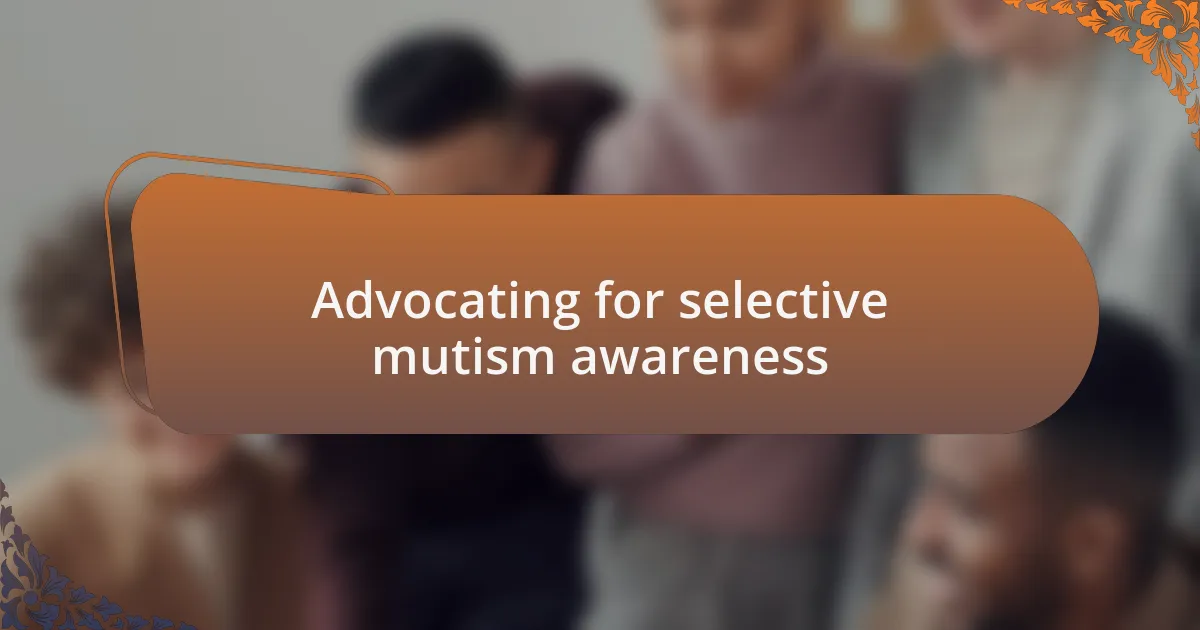
Advocating for selective mutism awareness
Advocating for selective mutism awareness is crucial because many people remain unaware of its impact on children and families. Recently, I found myself in a community meeting discussing this very topic. As I shared stories about kids who struggle to communicate, I saw faces light up with understanding. It was a powerful realization that when we share our experiences, we shed light on a condition that often goes unnoticed.
In my advocacy work, I’ve seen firsthand how knowledge can break down barriers. At a local school, I provided a workshop for teachers on recognizing and supporting students with selective mutism. One teacher shared her frustration about a quiet student who wouldn’t participate. After we discussed strategies, including the importance of patience and understanding, I witnessed that same student slowly engaging during class discussions. Doesn’t it fill your heart with hope to see positive changes when awareness spreads?
Sometimes, I reflect on how supportive networks within our community can shift perspectives. I recall a parent who initially faced isolation, feeling helpless as she watched her child struggle. After connecting with other families, she became an advocate herself, sharing insights and tips gathered from her journey. How empowering it is to transform struggles into a platform for advocacy! This journey has taught me that raising awareness isn’t just about education; it’s about fostering a culture of empathy and support.